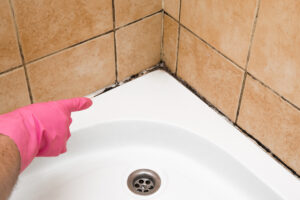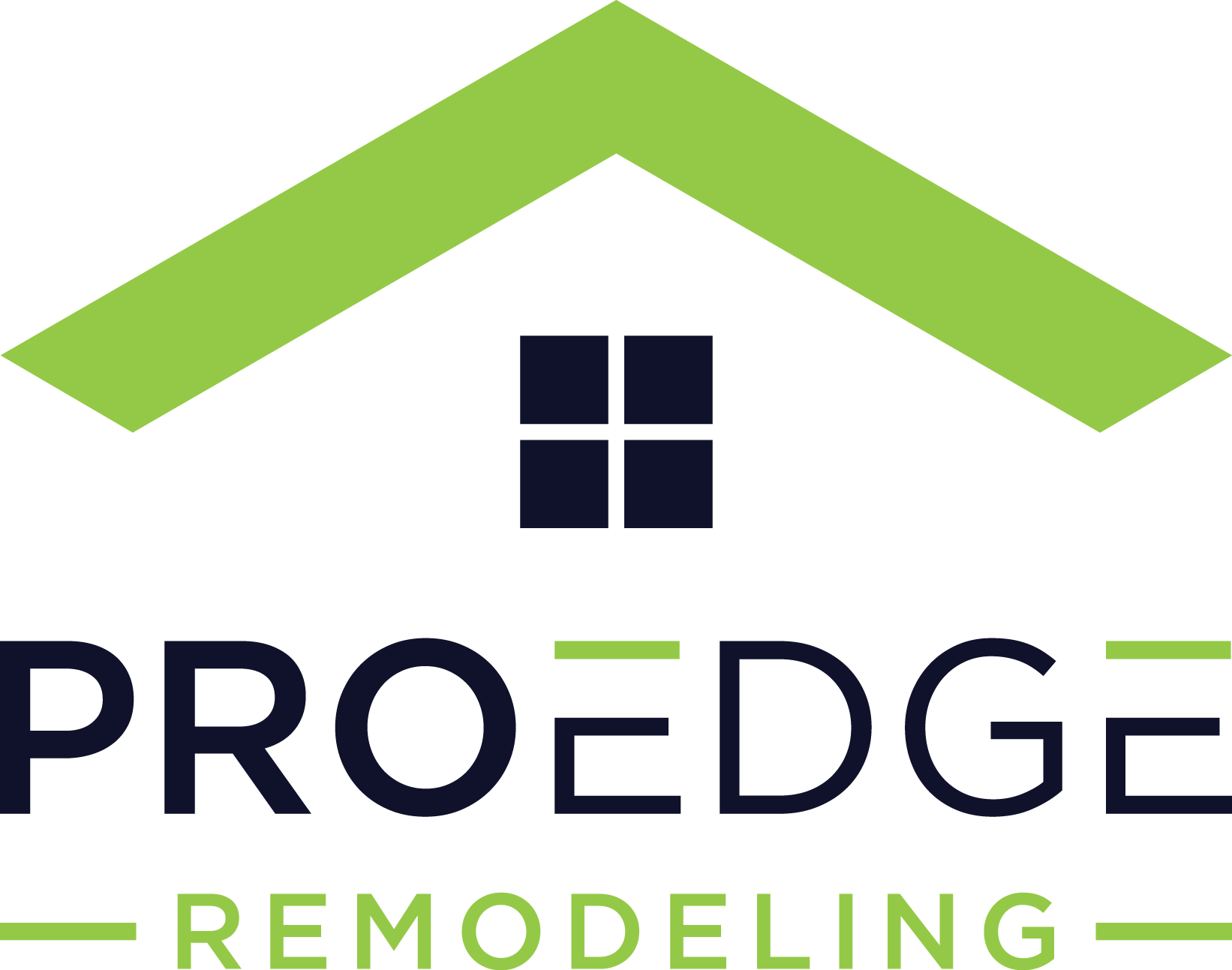How to Get Rid of Mold in the Bathroom: A Complete Guide to Mold Removal and Prevention

*Updated June 3rd, 2025
Bathroom mold is a stubborn, unsightly, and potentially dangerous problem that no homeowner wants to deal with—but many inevitably do. Mold thrives in warm, damp environments, making bathrooms the perfect breeding ground. From black mold on shower walls to mildew in tile grout, mold can not only damage surfaces but also lead to respiratory issues and other health effects from prolonged exposure to mold.
The good news? You can get rid of mold in your bathroom with the right tools, cleaning solutions, and prevention habits. Whether you’re dealing with light mildew or a more serious mold problem, this guide walks you through how to identify, remove, and prevent mold safely and effectively.
Understanding Why Mold Grows in Bathrooms
Bathrooms are naturally high-moisture environments due to showers, baths, and poor ventilation. This high humidity, combined with porous surfaces and water leaks, provides the ideal conditions for mold growth. Mold can grow on shower tiles, around drains, in tile grout, on shower curtains, and even on drywall or sheetrock.
Common causes of mold in bathrooms:
- Poor ventilation or lack of an exhaust fan
- High humidity and condensation
- Water leaks behind walls or under floors
- Soap scum buildup and organic matter in drains
- Damp towels or bath mats that don’t dry fully
Mold growth isn’t just cosmetic—it’s a health hazard. Exposure to mold can lead to allergic reactions, skin irritation, and serious respiratory problems, especially in people with asthma or compromised immune systems.
How to Identify Different Types of Bathroom Mold
Not all mold looks the same. Some appear as light gray or green fuzz, while others, like black mold (Stachybotrys chartarum), are darker and more dangerous.
Types of bathroom mold you might encounter:
- Black mold: Often found on shower walls, grout, or ceilings. Known for its toxic effects.
- Green or gray mold: Common in corners, along caulking, and around drains.
- Pink mildew: Actually a type of bacteria (Serratia marcescens), it grows on soap scum and moist surfaces.
Knowing what type of mold you’re dealing with helps you choose the most effective removal method. If you’re not sure, assume caution and wear protective gear when removing mold.
DIY Mold Removal Methods: Safe and Effective Solutions
If the mold growth is mild to moderate and doesn’t cover a large area, you can safely perform mold removal yourself. Here’s how to remove the black mold and other types of mold from your bathroom:
1. White Vinegar
Spray full-strength vinegar directly onto the moldy area using a spray bottle. Let it sit for at least an hour, then scrub with a brush. Vinegar kills about 80% of mold species and is safe for most surfaces.
2. Hydrogen Peroxide
Mix a 3% hydrogen peroxide solution and spray it on tiles, grout, or other affected areas. Let it foam for 10–15 minutes, then scrub and rinse thoroughly.
3. Baking Soda + Water
Mix 1/4 tablespoon of baking soda with water in a spray bottle. Spray, scrub, and then rinse. Repeat and let it dry. Baking soda is gentle, non-toxic, and deodorizes the area.
4. Bleach Solution
A traditional solution to kill mold is a mix of 1 cup bleach to 1 gallon of water. Spray on tile, grout, or caulking—but never mix bleach with ammonia or vinegar. Ventilate well and wear gloves.
5. Borax Paste
Mix borax and water into a paste and apply it to moldy grout or caulking. Let it sit and dry—no need to rinse off. Borax prevents mold from returning.
Protect Yourself During Mold Removal
Mold spores can spread easily and pose health risks. Always use the proper protective equipment and take precautions to avoid contamination.
Safety tips for mold removal:
- Wear a mask (N95 or higher), gloves, and eye protection
- Use a HEPA-filter vacuum to clean up loose spores
- Open windows or use an exhaust fan to circulate the air
- Seal off the bathroom door to prevent spores from spreading to the rest of the house
When to Call a Professional for Mold Remediation
DIY methods work well for small patches of mold, but larger infestations may require professional mold remediation. Call an expert if:
- Mold covers more than 10 square feet
- You smell a lot of mildew but don’t know where it’s coming from
- There’s evidence of water damage behind tile or drywall
- You or your family are experiencing health issues from mold exposure
Professionals use specialized tools and containment procedures to safely remove mold and restore healthy air quality.
Preventing Mold from Coming Back
Once you’ve removed mold from your bathroom, the key is to prevent it from returning. Ongoing moisture control and cleaning routines will keep mold at bay.
Top tips to prevent mold regrowth:
- Improve Ventilation: Install or upgrade an exhaust fan to reduce humidity. Leave it running for at least 20 minutes after using the shower.
- Use a Dehumidifier: Especially in poorly ventilated bathrooms, a dehumidifier can help keep humidity below 50%.
- Dry Surfaces: Wipe down shower walls, floors, and mirrors after use. Shake out and hang towels and mats to dry completely.
- Clean Weekly: Use a mold-killing cleaner on tiles, grout, and drains. Don’t let soap scum and residue build up.
- Use Mold-Resistant Products: Choose mold-resistant paint, caulk, and drywall. Opt for materials that are easier to keep dry.
- Seal Tile Grout: Sealed grout repels moisture better than untreated grout and reduces mold’s ability to grow.
Final Thoughts: Keep Your Bathroom Mold-Free
Bathroom mold is more than a nuisance—it’s a health risk that can spread quickly without proper attention. By understanding what causes mold, how to remove it safely, and how to prevent it from returning, you can maintain a clean, fresh, and healthy space.
Use these mold removal and prevention tips to deal with the mold before it becomes a bigger problem. Whether it’s black mold on your shower tile or mildew around your drain, consistent maintenance and proper ventilation are your best defenses.
Don’t wait for mold to take over—treat it early and keep your bathroom clean, dry, and safe for everyone in your home.
FAQ
How do I get rid of bathroom mold?
To get rid of bathroom mold, you can start by creating a mixture of equal parts water and vinegar and spraying it onto the affected areas. Let it sit for a few hours before scrubbing the mold away with a brush or sponge. You can also use bleach diluted with water or specialized mold removal products. It’s important to wear protective gear, such as gloves and a face mask, while cleaning mold.
What are some effective bathroom mold removal tips?
In addition to using cleaning solutions, it’s crucial to address the underlying causes of mold growth. Ensure proper ventilation in your bathroom by using exhaust fans or opening windows. Regularly clean and dry your bathroom, especially shower curtains, tiles, and grout. Keep humidity levels low and fix any leaks or plumbing issues promptly.
How can I prevent bathroom mold from recurring?
Preventing bathroom mold requires regular maintenance. Use mold-resistant paint on walls and ceilings, and consider installing a dehumidifier to control moisture levels. After showering or bathing, wipe down the walls and surfaces to remove excess moisture. Keep the bathroom well-ventilated, and promptly repair any leaks or water damage.
Can I remove black mold in my bathroom myself?
Black mold in the bathroom can be particularly concerning due to its potential health risks. It’s generally recommended to hire professionals for black mold removal to ensure thorough and safe remediation. They have the necessary expertise and equipment to handle the situation effectively.
What are the best mold removal products for DIY solutions?
There are several effective mold removal products available for DIY use. Some popular options include hydrogen peroxide, baking soda, borax, and commercial mold-killing sprays. However, always follow the manufacturer’s instructions and take necessary safety precautions when using these products.
When should I hire professionals for mold remediation?
It’s recommended to hire professionals for mold remediation if the affected area is large, persistent, or if you have specific health concerns. They can assess the extent of the mold problem, safely remove it, and implement measures to prevent future growth.
How do I choose the right mold remediation company?
When choosing a mold remediation company, ensure they are certified and experienced in handling mold issues. Check references, read reviews, and compare pricing and services. Ask about their methods, warranties, and any guarantees provided. This will help ensure you select a reputable and reliable company for the job.
How can I maintain a clean and healthy bathroom environment?
To maintain a clean and healthy bathroom, establish a regular cleaning routine. Clean surfaces, fixtures, and bathroom accessories using mold-inhibiting cleaners. Regularly inspect for leaks or water damage and address them promptly. Keep the bathroom well-ventilated and reduce moisture by using fans or dehumidifiers. Cleaning bathroom items like shower curtains and bath mats regularly is also important.
Additional Bathroom Resources

Anna has over six years of experience in the home services and journalism industries and serves as the Content Manager at MyHomePros.com, specializing in making complex home improvement topics like HVAC, roofing, and plumbing accessible to all. With a bachelor’s degree in journalism from Auburn University, she excels in crafting localized, comprehensive guides that cater to homeowners’ unique needs. Living on both coasts of the United States has equipped her with a distinctive perspective, fueling her passion for turning any house into a cherished home through informed, personalized decision-making.








